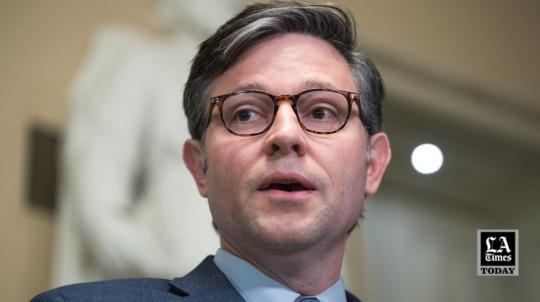#georgetown project
Explore tagged Tumblr posts
Text

new movie poster for the exorcism (2024)
29 notes
·
View notes
Text
"O Exorcismo" com Russell Crowe é um filme amaldiçoado? Entenda.
“O Exorcismo”, terror com Russell Crowe, passou por alguns problemas para ser finalizado, sendo considerado amaldiçoado. Entenda os motivos!
“O Exorcismo” é o novo filme de terror com Russell Crowe, e já está em cartaz nos cinemas nacionais. A produção que tenta fugir do padrão dos filmes de exorcismo, contando uma história que acontece nos bastidores de uma gravação de um filme de terror, passou por alguns problemas até entrar em cartaz. Até o próprio diretor Joshua John Miller, na estréia do filme em Wilmington, Estados Unidos,…
#Filme amaldiçoado#filme de terror amaldiçoado#filme de terror com padre#filme de terror com Russell Crowe#O exorcismo#o exorcismo é amaldiçoado?#o que é The Georgetown Project
0 notes
Text


is that a house of leaves reference.
1 note
·
View note
Note
!!!
You like photography? I love doing that too!!! What are your favorite things to take pictures off??
-🌌
where did you hear that from?? the DUMB pinned post????? do you just see a pretty picture and believe everything underneath it because you SHOULDN'T. because whoever wrote it is a PIECE OF SHIT LIAR with access to my account. i mean--what kind of name is ROME?? that's a city, idiot.
.........anyways that's really cool dude, i really like stealing jodies car and driving to a bigger city to take photos. i like seeing ppl walking abt worrying about things. this one's one of my favorites!!

((OOC: Mandatory disclaimer that I, Mod Rome, took this photo! I do not give permission to scrape this for AI ""art"" or like idk i doubt anyone will do anything with this I just hate AI))
#look at them!#i think the guy biking is biking to work#but he's sooooo pretentious about it#oh my god hes so annoying#“look at me i BIKE to work”#stfu we get it#bc you smell like SWEAT#sunshineposting#ask blog#((mod fun fact i do photography and will be projecting this onto swap!sparrow#((this one was taken on M street in Georgetown DC! ^^#dndads versa
1 note
·
View note
Text
A prominent computer scientist who has spent 20 years publishing academic papers on cryptography, privacy, and cybersecurity has gone incommunicado, had his professor profile, email account, and phone number removed by his employer, Indiana University, and had his homes raided by the FBI. No one knows why.
Xiaofeng Wang has a long list of prestigious titles. He was the associate dean for research at Indiana University's Luddy School of Informatics, Computing and Engineering, a fellow at the Institute of Electrical and Electronics Engineers and the American Association for the Advancement of Science, and a tenured professor at Indiana University at Bloomington. According to his employer, he has served as principal investigator on research projects totaling nearly $23 million over his 21 years there.
He has also coauthored scores of academic papers on a diverse range of research fields, including cryptography, systems security, and data privacy, including the protection of human genomic data. I have personally spoken to him on three occasions for articles here, here, and here.
“None of This Is in Any Way Normal”
In recent weeks, Wang's email account, phone number, and profile page at the Luddy School were quietly erased by his employer. Over the same time, Indiana University also removed a profile for his wife, Nianli Ma, who was listed as a lead systems analyst and programmer at the university's Library Technologies division.
As reported by The Bloomingtonian and later the The Herald-Times in Bloomington, a small fleet of unmarked cars driven by government agents descended on the Bloomington home of Wang and Ma on Friday. They spent most of the day going in and out of the house and occasionally transferred boxes from their vehicles. TV station WTHR, meanwhile, reported that a second home owned by Wang and Ma, located in Carmel, Indiana, was also searched. The station said that both a resident and an attorney for the resident were on scene during at least part of the search.
Attempts to locate Wang and Ma have so far been unsuccessful. An Indiana University spokesman didn't answer emailed questions asking if the couple was still employed by the university and why their profile pages, email addresses, and phone numbers had been removed. The spokesman provided the contact information for a spokeswoman at the FBI's field office in Indianapolis. In an email, the spokeswoman wrote: “The FBI conducted court authorized law enforcement activity at homes in Bloomington and Carmel Friday. We have no further comment at this time.”
Searches of federal court dockets turned up no documents related to Wang, Ma, or any searches of their residences. The FBI spokeswoman didn't answer questions seeking which US district court issued the warrant and when, and whether either Wang or Ma is being detained by authorities. Justice Department representatives didn't return an email seeking the same information. An email sent to a personal email address belonging to Wang went unanswered at the time this post went live. Their resident status (e.g., US citizens or green card holders) is currently unknown.
Fellow researchers took to social media over the weekend to register their concern over the series of events.
“None of this is in any way normal,” Matthew Green, a professor specializing in cryptography at Johns Hopkins University, wrote on Mastodon. He continued: “Has anyone been in contact? I hear he’s been missing for two weeks and his students can’t reach him. How does this not get noticed for two weeks???”
In the same thread, Matt Blaze, a McDevitt professor of computer science and law at Georgetown University, said, “It's hard to imagine what reason there could be for the university to scrub its website as if he never worked there. And while there's a process for removing tenured faculty, it takes more than an afternoon to do it.”
Local news outlets reported the agents spent several hours moving boxes in an out of the residences. WTHR provided the following details about the raid on the Carmel home:
Neighbors say the agents announced "FBI, come out!" over a megaphone.
A woman came out of the house holding a phone. A video from a neighbor shows an agent taking that phone from her. She was then questioned in the driveway before agents began searching the home, collecting evidence and taking photos.
A car was pulled out of the garage slightly to allow investigators to access the attic.
The woman left the house before 13News arrived. She returned just after noon accompanied by a lawyer. The group of 10 or so investigators left a few minutes later.
The FBI would not say what they were looking for or who is under investigation. A bureau spokesperson issued a statement: “I can confirm we conducted court-authorized activity at the address in Carmel today. We have no further comment at this time.”
Investigators were at the house for about four hours before leaving with several boxes of evidence. 13News rang the doorbell when the agents were gone. A lawyer representing the family who answered the door told us they're not sure yet what the investigation is about.
This post will be updated if new details become available. Anyone with firsthand knowledge of events involving Wang, Ma, or the investigation into either is encouraged to contact me, preferably over Signal at DanArs.82. The email address is: [email protected].
34 notes
·
View notes
Text
I have such a difficult time connecting with the Cats community now. Part of me feels like maybe I'm too old for the current fandom(I don't feel old, but I'm certainly not 19 anymore). Or that perhaps it's because I don't much care about ships. Sometimes I worry that I intimidate people, and I'd hate that. Let me introduce myself and how Cats has shaped my life, and maybe I can find my people?

I first saw Cats at a tiny local theatre when I was eight. I fell in love with it, and even though I didn't have the movie yet, I spent months afterwards with just the poem book and highlights album. Eventually I got the 98 VHS too- and then another local theatre put it on when I was ten! I got to see it twice there. And afterwards, I made up my own attempt at a costume, turned our spare room into my attempt at the set, and put some chairs in there to put on the highlights show for some friends of my mother. The CD was worn out, I went on with the show, and they even gave me a card and a new CD afterwards- the London 2 disc set! Looking back, I think how embarrassing it probably was, but I was so happy and proud of myself in the moment. Two more years later, US Tour 5 came through Nashville, and I got to go and stagedoor for the first time. I wore a tail I made and one of the actresses told me I had a perfect Bombalurina tail twirl. For all those years, I worked Cats into school projects, I drew nothing else. My mom put up with it for so long, and I still thank her to this day.
And then I went into middle school. New school, new students, and I started getting bullied for it. I found other musicals I didn't get bullied for- Phantom, Wicked, and Sweeney- to latch onto, and I kinda put Cats in the back of my head. I still loved it, but my hyperfixation had waned thanks to mean kids, and other than occasionally watching the 1998 movie, I didn't think much of it for years.
But the US Tour 6 announced a date in Nashville. I hadn't seen the show in eight years, and I wasn't about to miss it. I had already started taking an interest in cosplay, but I'd never made a costume like that. I remembered admiring the CCDB as a kid though, and I told myself I was totally capable of making my own, just to go see the show in costume. And I did.

And the cast were SO sweet, and I started finding Cats fans on Instagram. I thought I could do better on the costume, so when the show stopped in Chattanooga a couple months later... I did it again.

The pandemic hit and I lost my job. Immediately I started getting work making Cats cosplays for others, and I haven't stopped since. And when the show resumed, I made an overnight trip to Memphis to dress up again!

And then, I saved until I could finally go see the Royal Caribbean production (front row all three performances), and got to cosplay on the cruise and get a picture on stage with the cast! This was absolutely everything to me, especially seeing the original choreography as opposed to the revival. I definitely cried. (I'm in the middle bottom row!)

I've gotten to make some costume pieces for three regional productions of Cats, in the Dominican Republic, Atlanta Georgia, and most recently Georgetown Texas. I've won some local cosplay contest with my costumes, too! And I'm lucky enough to own a few original pieces- though I've had to part with some too.

My love for this show has spanned just over 17 years now. I adore the story, the costumes, the choreography, the sets, and the characters. It's part of how I learned I am autistic. It's given me confidence I didn't know I could find. And every time I get to see it live, I feel like I'm where I belong. The fandom has felt quiet. And I'm not sure if that's just because I don't know where I fit in? So here's hoping I can find my tribe.
Favorite productions: Original Broadway, Moscow, and Mexico 2013/2018
Favorite Cats: Jemima/Sillabub, Bombalurina, Demeter, Munkustrap, Tumblebrutus, Jellylorum
Favorite songs: Jellicle Songs for Jellicle Cats, The Song of the Jellicles and the Jellicle Ball, Macavity
Favorite cats to cosplay: Etcetera and Victoria
#cats the musical#cats cosplay#cats the musical cosplay#jellicle cats#cats broadway#cats 1998#about myself
83 notes
·
View notes
Text
April 27, 2025HEATHER COX RICHARDSON
APR 28
READ IN APP
Last night a new club opened in the wealthy Georgetown neighborhood in Washington, D.C. It’s called “Executive Branch,” and it’s an invitation-only club backed by Donald Trump Jr. and megadonor Omeed Malik. Dasha Burns of Politico reported that it costs more than half a million dollars to join. The exclusive club is designed to allow top business executives to talk privately with Trump advisors and cabinet members. Burns reports that the club already has a waiting list.
When then-candidate Donald Trump celebrated the administration of President William McKinley, it was always clear he saw it as the triumphant marriage of the very rich to the U.S. government. It was the era of so-called robber barons, industrialists and financiers who flooded political campaigns with money to convince voters that those trying to rein them in were socialists or anarchists, then called upon the politicians they put into power to pass laws that benefited their businesses.
“Behind every one of half the portly well-dressed members of the Senate can be seen the outlines of some corporation interested in getting or preventing legislation,” the Chicago Tribune wrote in 1884, “or of some syndicate that has invaluable contracts or patents to defend or push.” Last Sunday a new filing with the Federal Election Commission revealed that donors delivered an astounding $239 million for Trump’s inauguration. Theodore Schleifer of the New York Times notes that Trump’s 2017 inaugural committee raised $107 million. The $346 million raised by Trump’s two inaugural committees is more than the monies raised by all other inaugural committees since Richard Nixon’s committee raised $4 million in 1973. While Trump’s allies have said the money that wasn’t spent on festivities will go to other projects Trump is behind, including his presidential library, there is no oversight on how Trump uses that money.
Spending on the election was even more dramatic. Earlier this month, Americans for Tax Fairness analyzed spending in 2024 and discovered that just 100 billionaire families donated a record-breaking $2.6 billion to federal campaigns, up by 160 times from billionaire spending in elections before the Supreme Court’s 2010 Citizens United decision. Seventy percent of that money went to Republican candidates or causes. In the three races that determined control of the Senate—Montana, Ohio, and Pennsylvania—outside money from billionaires made up 58.1%, 56.8%, and 44.5% of the outside money coming in. Elon Musk donated about $290 million, giving four times as much money to political campaigns in 2024 as he paid in income taxes between 2013 and 2018.
Those investments in a Trump administration are paying off. The U.S. Department of Agriculture (USDA) is withdrawing a Biden-era rule requiring poultry companies to keep the levels of salmonella bacteria below a certain level in their meats to prevent illnesses commonly known as food poisoning. When the Biden administration proposed the rule, the Centers for Disease Control and Prevention explained that salmonella causes 1.35 million infections a year and kills 420 people. The USDA said that about 125,000 of those infections came from chicken and another 43,000 from turkey. Officials estimated that the new rule would reduce salmonella illnesses by 25%.
The National Chicken Council celebrated the Trump administration's reversal of the rule, saying it would have had “no meaningful impact on public health.” On Friday, Charisma Madarang of Rolling Stone pointed out that the poultry company Pilgrim’s Pride gave $5 million to Trump’s inaugural committee, making it the largest donor to that effort. Two of the company’s executives, chief executive officer Fabio Sandri and head of the company’s food safety and quality assurance Kendra Waldbusser, serve on the board of the National Chicken Council.
Last month, Rick Claypool of the consumer rights organization Public Citizen noted that the Trump administration has dropped federal investigations and lawsuits against 89 corporations, many of whose leaders donated heavily to Trump’s inaugural fund. Another of those who has benefited significantly from the new policies is Elon Musk. Lisa Gilbert, co-president of Public Citizen, told Laurence Darmiento of the Los Angeles Times: “I think the overall goals of Donald Trump and Elon Musk are to slash regulations, to slash budgets and to cut positions all with this claim they are going to increase efficiency and fight fraud.”
But corporate ties to the government are not just about avoiding oversight; they are also about snagging lucrative federal contracts. Gilbert noted: “I would say it’s a smoke screen and cover for personal profit and corporate power—and that’s where Musk’s personal conflicts of interest come into play, as well as the other corporate actors across this government.”
On Friday, Andrew Perez and Asawin Suebsaeng of Rolling Stone reported that staffers for billionaire Elon Musk’s “Department of Government Efficiency” have been working on a multimillion-dollar communications project called “Project Lift” at the Federal Aviation Administration (FAA). The plan appears to be to insert Musk’s Starlink into the $2.4 billion contract Verizon currently holds to upgrade the FAA’s systems, but DOGE staff have made FAA employees sign nondisclosure agreements, so details are scarce. An FAA spokesperson told Perez and Suebsaeng: “The federal employees running Project Lift are exploring a variety of solutions to modernize the FAA’s telecommunications network. Current contractors are part of the discussion.”
In the Trump administration, the connections between the government and business include the president’s family members.
Zach Everson of Forbes has been following the story of the Trump family’s involvement in artificial intelligence company Dominari Holdings, Inc. In February, Everson reported that just weeks after Trump announced the administration's push to loosen regulations and expand infrastructure for AI, his sons Donald Jr. and Eric invested in Dominari and joined its brand new advisory board, for which they received 750,000 shares each in the company although they had no official duties. The company then launched another company, American Data Center, Inc., in which the Trumps also invested. That company focused on the “high-performance computing infrastructure” to support AI, cloud computing, and cryptocurrency.
According to Amber Jackson of the U.K.’s Data Centre Magazine, Dominari stock leaped more than 1,000% after the Trump sons joined the advisory board. On Friday, Everson reported on a Securities and Exchange Commission filing revealing that Dominari has applied for conditions that would enable the shareholders, including Don and Eric Trump, to sell their stocks earlier than a normal timeline would allow. Each Trump brother now controls 1.2 million shares of Dominari, each holding now worth $5.8 million.
On Wednesday, Trump made the pay-to-play nature of his administration explicit when he announced that the top 220 holders of his $TRUMP cryptocurrency token would be invited to a dinner with Trump at his private club and that they would be offered a “VIP White House Tour” the next day. MacKenzie Sigalos and Kevin Collier of CNBC reported the meme coin jumped more than 50% on the news, netting Trump and his allies nearly $900,000 in trading fees.
Just before sunrise this morning, House minority leader Hakeem Jeffries (D-NY) and Senator Cory Booker (D-NJ) began a live-streamed sit-in protest and discussion on the steps of the U.S. Capitol to call attention to the Republicans’ budget bill. On Friday, Alan Rappeport and Tony Romm of the New York Times reported that the Republicans’ proposed 2026 budget would slash federal support for “child care, health research, education, housing assistance, community development and the elderly,” and for foreign aid. Attacking “woke” programs, it appears to implement much of Project 2025. Russell Vought, who was director of the Office of Management and Budget during Trump’s first term and has returned to that position in his second, was a key author of that playbook.
Cuts to programs that protect ordinary Americans will help to fund the extension of Trump’s 2017 tax cuts for the wealthy and corporations. Extending those tax cuts will cost at least $4 trillion over the next decade. Congress returns to session tomorrow, and it will take up the budget. In a statement, Jeffries and Booker said: “Republican leaders have made clear their intention to use the coming weeks to advance a reckless budget scheme to President Trump’s desk that seeks to gut Medicaid, food assistance and basic needs programs that help people, all to give tax breaks to billionaires.”
Throughout the day, Democratic lawmakers, activists, and passersby joined Jeffries and Booker’s twelve-hour sit-in.
An AP/NORC poll released yesterday showed that Trump’s approval rating has dropped to 39%. Today a Washington Post–ABC News–Ipsos poll confirmed that number. Trump’s approval rating at almost 100 days in office is the lowest of any president in 80 years.
For his part, Trump announced today that he “is bringing Columbus Day back from the ashes!”
—
19 notes
·
View notes
Text

@EandPCartoons :: Morten Morland
* * * * *
LETTERS FROM AN AMERICAN
April 27, 2025
Heather Cox Richardson
Apr 28, 2025
Last night a new club opened in the wealthy Georgetown neighborhood in Washington, D.C. It’s called “Executive Branch,” and it’s an invitation-only club backed by Donald Trump Jr. and megadonor Omeed Malik. Dasha Burns of Politico reported that it costs more than half a million dollars to join. The exclusive club is designed to allow top business executives to talk privately with Trump advisors and cabinet members. Burns reports that the club already has a waiting list.
When then-candidate Donald Trump celebrated the administration of President William McKinley, it was always clear he saw it as the triumphant marriage of the very rich to the U.S. government. It was the era of so-called robber barons, industrialists and financiers who flooded political campaigns with money to convince voters that those trying to rein them in were socialists or anarchists, then called upon the politicians they put into power to pass laws that benefited their businesses.
“Behind every one of half the portly well-dressed members of the Senate can be seen the outlines of some corporation interested in getting or preventing legislation,” the Chicago Tribune wrote in 1884, “or of some syndicate that has invaluable contracts or patents to defend or push.” Last Sunday a new filing with the Federal Election Commission revealed that donors delivered an astounding $239 million for Trump’s inauguration. Theodore Schleifer of the New York Times notes that Trump’s 2017 inaugural committee raised $107 million. The $346 million raised by Trump’s two inaugural committees is more than the monies raised by all other inaugural committees since Richard Nixon’s committee raised $4 million in 1973. While Trump’s allies have said the money that wasn’t spent on festivities will go to other projects Trump is behind, including his presidential library, there is no oversight on how Trump uses that money.
Spending on the election was even more dramatic. Earlier this month, Americans for Tax Fairness analyzed spending in 2024 and discovered that just 100 billionaire families donated a record-breaking $2.6 billion to federal campaigns, up by 160 times from billionaire spending in elections before the Supreme Court’s 2010 Citizens United decision. Seventy percent of that money went to Republican candidates or causes. In the three races that determined control of the Senate—Montana, Ohio, and Pennsylvania—outside money from billionaires made up 58.1%, 56.8%, and 44.5% of the outside money coming in. Elon Musk donated about $290 million, giving four times as much money to political campaigns in 2024 as he paid in income taxes between 2013 and 2018.
Those investments in a Trump administration are paying off. The U.S. Department of Agriculture (USDA) is withdrawing a Biden-era rule requiring poultry companies to keep the levels of salmonella bacteria below a certain level in their meats to prevent illnesses commonly known as food poisoning. When the Biden administration proposed the rule, the Centers for Disease Control and Prevention explained that salmonella causes 1.35 million infections a year and kills 420 people. The USDA said that about 125,000 of those infections came from chicken and another 43,000 from turkey. Officials estimated that the new rule would reduce salmonella illnesses by 25%.
The National Chicken Council celebrated the Trump administration's reversal of the rule, saying it would have had “no meaningful impact on public health.” On Friday, Charisma Madarang of Rolling Stone pointed out that the poultry company Pilgrim’s Pride gave $5 million to Trump’s inaugural committee, making it the largest donor to that effort. Two of the company’s executives, chief executive officer Fabio Sandri and head of the company’s food safety and quality assurance Kendra Waldbusser, serve on the board of the National Chicken Council.
Last month, Rick Claypool of the consumer rights organization Public Citizen noted that the Trump administration has dropped federal investigations and lawsuits against 89 corporations, many of whose leaders donated heavily to Trump’s inaugural fund. Another of those who has benefited significantly from the new policies is Elon Musk. Lisa Gilbert, co-president of Public Citizen, told Laurence Darmiento of the Los Angeles Times: “I think the overall goals of Donald Trump and Elon Musk are to slash regulations, to slash budgets and to cut positions all with this claim they are going to increase efficiency and fight fraud.”
But corporate ties to the government are not just about avoiding oversight; they are also about snagging lucrative federal contracts. Gilbert noted: “I would say it’s a smoke screen and cover for personal profit and corporate power—and that’s where Musk’s personal conflicts of interest come into play, as well as the other corporate actors across this government.”
On Friday, Andrew Perez and Asawin Suebsaeng of Rolling Stone reported that staffers for billionaire Elon Musk’s “Department of Government Efficiency” have been working on a multimillion-dollar communications project called “Project Lift” at the Federal Aviation Administration (FAA). The plan appears to be to insert Musk’s Starlink into the $2.4 billion contract Verizon currently holds to upgrade the FAA’s systems, but DOGE staff have made FAA employees sign nondisclosure agreements, so details are scarce. An FAA spokesperson told Perez and Suebsaeng: “The federal employees running Project Lift are exploring a variety of solutions to modernize the FAA’s telecommunications network. Current contractors are part of the discussion.”
In the Trump administration, the connections between the government and business include the president’s family members.
Zach Everson of Forbes has been following the story of the Trump family’s involvement in artificial intelligence company Dominari Holdings, Inc. In February, Everson reported that just weeks after Trump announced the administration's push to loosen regulations and expand infrastructure for AI, his sons Donald Jr. and Eric invested in Dominari and joined its brand new advisory board, for which they received 750,000 shares each in the company although they had no official duties. The company then launched another company, American Data Center, Inc., in which the Trumps also invested. That company focused on the “high-performance computing infrastructure” to support AI, cloud computing, and cryptocurrency.
According to Amber Jackson of the U.K.’s Data Centre Magazine, Dominari stock leaped more than 1,000% after the Trump sons joined the advisory board. On Friday, Everson reported on a Securities and Exchange Commission filing revealing that Dominari has applied for conditions that would enable the shareholders, including Don and Eric Trump, to sell their stocks earlier than a normal timeline would allow. Each Trump brother now controls 1.2 million shares of Dominari, each holding now worth $5.8 million.
On Wednesday, Trump made the pay-to-play nature of his administration explicit when he announced that the top 220 holders of his $TRUMP cryptocurrency token would be invited to a dinner with Trump at his private club and that they would be offered a “VIP White House Tour” the next day. MacKenzie Sigalos and Kevin Collier of CNBC reported the meme coin jumped more than 50% on the news, netting Trump and his allies nearly $900,000 in trading fees.
Just before sunrise this morning, House minority leader Hakeem Jeffries (D-NY) and Senator Cory Booker (D-NJ) began a live-streamed sit-in protest and discussion on the steps of the U.S. Capitol to call attention to the Republicans’ budget bill. On Friday, Alan Rappeport and Tony Romm of the New York Times reported that the Republicans’ proposed 2026 budget would slash federal support for “child care, health research, education, housing assistance, community development and the elderly,” and for foreign aid. Attacking “woke” programs, it appears to implement much of Project 2025. Russell Vought, who was director of the Office of Management and Budget during Trump’s first term and has returned to that position in his second, was a key author of that playbook.
Cuts to programs that protect ordinary Americans will help to fund the extension of Trump’s 2017 tax cuts for the wealthy and corporations. Extending those tax cuts will cost at least $4 trillion over the next decade. Congress returns to session tomorrow, and it will take up the budget. In a statement, Jeffries and Booker said: “Republican leaders have made clear their intention to use the coming weeks to advance a reckless budget scheme to President Trump’s desk that seeks to gut Medicaid, food assistance and basic needs programs that help people, all to give tax breaks to billionaires.”
Throughout the day, Democratic lawmakers, activists, and passersby joined Jeffries and Booker’s twelve-hour sit-in.
An AP/NORC poll released yesterday showed that Trump’s approval rating has dropped to 39%. Today a Washington Post–ABC News–Ipsos poll confirmed that number. Trump’s approval rating at almost 100 days in office is the lowest of any president in 80 years.
For his part, Trump announced today that he “is bringing Columbus Day back from the ashes!”
LETTERS FROM AN AMERICAN
HEATHER COX RICHARDSON
#tariffs#political cartoons#Morten Moreland#Letters From an American#Heather Cox Richardson#President William McKinley#corruption#pay for play#reckless budget#oligarchy#DOGE#starlink#bribery
19 notes
·
View notes
Text
I mentioned wanting to write a fic about how things become a little more functional between Simon and August in their 20s, so here’s the scenario I want to write the fic about:
Simon and Wilhelm are close to graduating university. Felice is doing studies abroad in some capacity, and Sara is on the other coast of Sweden. August has just returned from university at Georgetown and is taking up some crown prince duties.
Simon and Wilhelm didn’t go to the same school—they each ended up in a school that fit their study needs—but they’re about 1-1.5 hours apart by train. They try to see one another relatively often, maybe on the weekends. They each have their own set of friends at their own school. In the final semesters of university, Simon gets involved in some particular, career-related project I haven’t decided on yet, which takes up a little more of his time. Their relationship is a little more “long distance” than usual but they still care for each other.
Wille’s having a rough go of it, though. In part he’s struggling academically, in part because he’s feeling the identity pressure of, who is he exactly? He’s done a lot of exploring over the past years, after leaving the crown, because trying to find yourself after a life of being told who you need to be is an ongoing process. He’s still trying to figure things out. There might be some Gender in the mix, too. (I am a they/he Wille truther.) Anyway, some of Wille’s university friends use recreational drugs, never in a way where they’re pressuring him but in a way where he’s around it. And with things being tough, Wille uses a few times in a “just for fun, just this once” sort of way, and then it begins to escalate.
Simon obviously notices that Wille is using, because his life story and what he remembers of life with Micke means he will notice. And immediately he knows he wants to get Wille help, but he’s also terrified of this becoming a situation where he feels like he has to handle everything by himself. He enlists the help of Sara and Felice from afar, he talks to Linda about it, but he realizes he also needs help from someone in Wilhelm’s family. Someone who sort of knows the upper class pressures and the way Kristina and Ludwig can be and all those insider things. It’s the kind of thing he might go to Erik about if Erik were alive, but Erik isn’t alive, and who was Erik anyway?
Well… over the past six or seven years, Wilhelm and August have been doing their best to have some kind of relationship. It starts awkward and hesitant at first, but becomes something over time. They try to check in on the phone once a week, and they try to coordinate their plans going in to family Christmas and such. They know what they are going to say if Kristina tries to pit the two against one another, they know how to cover for the other if one of them just wants to duck out of the fifth course of dinner and just scream. They can talk each other through panic attacks now and grieve together. Maybe Erik was the brother each of them wanted. Maybe they are also becoming the sibling each of them needed, inch by inch.
And Simon knows this, and has been okay with it happening because Wille respects his boundaries around it and has kept his Simon sphere and his August sphere separate so far.
But now Wille is in danger, and Simon knows he wants someone from Wille’s family (the part of Wille’s family he’s not part of, anyway) to help him.
So he calls August at an awkward time of day and says, “Hi. I didn’t want to have to do this, but I need your help.”
And August has noticed the signs of a growing addiction in Wille as well—of course he has, he has watched his father, he has dealt with this himself—and was about a day away from calling Simon in desperation.
“I need your help, too,” August says.
So they end up banding together to help Wille, to make sure Wille feels supported by both of them, to handle as much as possible before Kristina can swoop in (or before they have to call her in, in a careful and coordinated way.)
Simon and August end up talking about their own fathers, and realize they share some experiences, that they can relate to each other’s hypervigilance, even if they came from different social classes. How would things have been different, they wonder, if they had known this from the start?
As Simon opens up to him, August comes to realize the extent to which Simon still lives with the aftermath of the video. August realizes that yes, Simon is getting incredible grades and gaining people’s respect and presenting at music conferences around Europe as an undergraduate, and that still coexists with the pain and the fear. August has always loathed himself for posting the video, but his remorse takes on a new texture, one that is more inclined toward positive action steps than wallowing.
As August opens up to him, Simon comes to realize that August loved Sara, that August still regrets not loving Sara the way she deserved to be loved. Simon has to some extent rationalized August’s falling in love with Sara as fuckboy manipulation tactics—that’s easier to believe—but he notices the similarities between how August loves and how Wilhelm loves, how they both burn so bright for another person that they sometimes can’t see that person clearly. Simon starts to see how August tries to care for other people and make them feel like they belong, even if it doesn’t always look the way he expects.
We were all so young then, Simon and August think.
Wilhelm looks at these two unexpected people who love him and want him to be well (who love them, they tentatively suggest, as August and Simon each hold one of their hands.) Wilhelm is surprised and a little afraid and also a little… hopeful?
We are all so young now, they all think. And yet we are still growing.
And together they build something new.
#young royals#simon eriksson#august horn of årnäs#unprince wilhelm#fanfic idea#sharing this one with y’all this rainy morning because it’s the warm blanket I need to wrap around myself
35 notes
·
View notes
Note
alright jen i have a prompt for ya but first happy valentine's/friends day
so for the prompt let's go with firstprince &
🧺 Thoughtful picnic dates
Happy Valentine's Day! Hope you like it!
***
Henry knows that Alex doesn’t always remember to eat when he’s busy working on something for his schooling, his mom, or his side project at a small legal clinic.
This is why Henry has taken to visiting Alex on his longest days. Such as today.
He knows that Alex is in the library at the moment, so he makes a point of setting up his little picnic outside underneath their favorite tree in the courtyard. Once he sets the basket in the center, he gives David’s leash to one of his PPOs and enters the library.
There’s a hush that always seems to happen whenever Henry appears on Georgetown campus, which is slightly annoying, but always seems to alert Alex to his presence because no matter how in the zone he is, he always looks up with a soft, fond smile. “Baby.”
“Hello, love,” Henry says as he reaches Alex’s table. “Think it’s time for a break?”
“For you? Always.”
Henry laces his hand with Alex’s and they walk out to the place that he always sets up their picnics.
“Aw, baby,” Alex says as he gives him a kiss before sitting opposite him. and greeting David. “You always create the most thoughtful picnic dates for us.”
“Well, I know how to take care of my love and make sure that he’s eating while preparing to take over the world,” Henry assures him. He’s so happy to hear how much Alex loves his efforts to feed him.
Alex laughs. “You’re the best boyfriend a guy could ask for.”
Henry grins. “It’s a good thing that you never had to ask. Always yours, even before you decided to play nice with me.”
“And now, you’re mine forever.”
“Exactly what I want to be.”
“Good.”
19 notes
·
View notes
Text
The Blue Mansion
Hello! Just got back from a visit to Georgetown, Penang, one of my favourite places, and felt inspired to build a version of the Cheong Fatt Tze House in the Sims 4. The house is also known as The Blue Mansion, for obvious reasons, and is popular for having featured in Crazy Rich Asians.


As is my custom, I aim for accuracy and fidelity to original architecture within game limitations, and this is no different. I'm loving how it looks so far, and this is a fun little project for now. Perhaps I might put this up on the gallery, as I am using mostly in game things, although it does contain CC, but not a whole lot, most important is just Felixandre's Fayun Sets.








31 notes
·
View notes
Text
@DefiyantlyFree
Subscribe
In 2020 there was something called the Transition Integrity Project (TIP). It was a bunch of wargames that were set up by the most deep state Trump hating people you can imagine run by Rosa Brooks. Rosa Brooks is the former assistant to George Soros, she was a Pentagon official, she is Georgetown law professor, and she is a Democratic Party operative.
This nonpartisan TIP project was funded by Protect Democracy and United to Protect Democracy. Both of these were actually launched in January 2017 by former Obama administrative lawyers. One of those lawyers is former deputy White House Council Ian Bassin. They were formed as a resistance to the Trump administration.
In late June of 2020, TIP conducted a tabletop exercise using establishment democrats and the never Trump faction of the Republican party, such as Michael Steele to map out the realities of a potential coup by Donald Trump who would refuse to leave office.
This dark insidious project was documented and reported on by people like
@RaheemKassam
and
@MikeBenzCyber
and the war room but other than that, the mainstream media coverage of this was spotty at best.
The wargames were played out under the assumption that Donald Trump was a dictator who was going to consolidate power with his base of white supremacists who would need to be neutralized and eliminated after the election. Yes that was their language.
17 notes
·
View notes
Text
John Knefel at MMFA:
If former Trump adviser Steve Bannon has it his way, the Supreme Court will decide whether the president can unilaterally suspend the writ of habeas corpus before the justices leave for their recess at the end of June. Habeas corpus refers to an incarcerated person’s right to appear before a judge to challenge their imprisonment. According to Georgetown law professor Steve Vladeck, among legal scholars the “near-universal consensus is that only Congress can suspend habeas corpus.” The right is enshrined in the Constitution, which guarantees that the “Privilege of the Writ of Habeas Corpus shall not be suspended, unless when in Cases of Rebellion or Invasion the public Safety may require it.” Bannon’s campaign to suspend habeas corpus to facilitate President Donald Trump's mass deportation plans appears to have gained a foothold inside the administration. On May 9, White House deputy chief of staff Stephen Miller — a top architect of Trump’s immigration regime — told reporters that suspending habeas corpus was “an option we’re actively looking at.” Vladeck and other legal scholars have lambasted the administration’s legal reasoning, which seems to rely heavily on Trump’s invocation of an 18th-century law known as the Alien Enemies Act. The administration argues that the law — which gives the executive branch sweeping detention and deportation powers historically reserved for wartime use — is applicable because unauthorized immigration to the United States amounts to an “invasion.” An article at Just Security calls that argument “extremely dangerous, and at odds with the text and original meaning of the Constitution.”
Bannon and Mike Davis call for habeas showdown at SCOTUS
On May 10, Bannon interviewed Article III Project founder Mike Davis about what they both characterized as a looming showdown with the judicial branch in general, and the Supreme Court specifically, regarding President Donald Trump’s authority to restrict immigration. “If these judges actually think that foreign terrorists who have invaded our country are entitled to years of court proceedings and due process to get them the hell out, then we need to suspend the writ of habeas corpus because this is an invasion,” Davis said on the War Room podcast. “If the courts are going to say that these terrorists have habeas rights, which they don't, if that's what the courts are going to say, then the president has a constitutional duty to suspend the writ of habeas corpus and repel this invasion,” he added. “Mike, real quickly, this constitutional crisis is going to have to be solved in the Supreme Court or not,” Bannon said. “I say it’s mid-to-late June. Is that a good time frame, or do you think it'll take longer?” “Yeah, I think that's about right, because these Supreme Court justices go on their two-month siesta after the term ends in June,” Davis replied. “And so I imagine that they're going to — I think your timing's spot on, Steve.”
[...]
Bannon on suspending habeas: “There is going to be a constitutional crisis before the court leaves” Bannon and his War Room podcast guests have been waging a campaign to persuade Trump to take the extraordinary step of suspending habeas rights since at least April 22, when right-wing influencer Rogan O’Handley, who goes by the moniker DC Draino, floated the idea on the show. “I also argue we should also consider suspending the writ of habeas,” O’Handley said. “That is a constitutional power that the president can use in the event of rebellion or invasion, it has been done before, it can be done with the stroke of a pen, and we can start to take more drastic actions to deport illegals, especially the cartels, without judicial overview — without the courts getting involved.” “DC Draino with the solutions,” Bannon said in response. “Heads are going to blow up on this.” Bannon has returned to the subject frequently since then, on War Room and in other venues. “They, the opposition, are trying to force a constitutional crisis at the Supreme Court level to force President Trump's hands on deportations of the 10 million,” Bannon said on April 24, before praising O’Handley’s “magnificent” idea of suspending habeas rights.
Right-wing fascists Stephen Bannon and Mike Davis make a push for SCOTUS to suspend habeas corpus for undocumented immigrants (and eventually all Americans if these two bozos get their way).
#Stephen Bannon#Mike Davis#Real America's Voice#War Room#SCOTUS#Rogan O’Handley#Kristi Noem#Alien Enemies Act#Mass Deportations
5 notes
·
View notes
Text
Inside the GOP’s secret plan to destroy Medicaid
April 29, 2025

House Speaker Mike Johnson (R-La.) has painted a target on Medicaid.
You may have heard some of our federal lawmakers attest to their respect for Medicaid and its generally low-income enrollment base.
Listen to House Speaker Mike Johnson (R-La.) on Fox News a couple of weeks ago talking about the need to preserve the state-federal program so it serves “young single mothers down on their fortunes for a moment, the people with real disability, the elderly.”
As articulated by Johnson and other GOP lawmakers, this idea seems pretty unexceptionable. Unless, that is, you examine what’s really behind this declaration of service for the less fortunate among us.
There would be no good way out of this for any state, no matter how rich or well-intentioned. It’s simply too much money.
— Joan Alker, Georgetown University, on GOP plans to slash Medicaid funding
What they’re really talking about is killing the Medicaid expansion that was passed as part of the Affordable Care Act in 2010. They have a plan to do exactly that. It’s not exactly secret, but it’s abstruse enough that they hope most people, who aren’t fully conversant with the complexities of the program, won’t get the drift. So I’m here to explain what they’re up to.
To understand, you have to be aware of two facts. One is that the federal government contributes 90% of the cost of medical service for expansion enrollees.
The other is that the federal match for traditional Medicaid, which principally serves low-income families with children, is lower. It varies state by state and ranges from 50% for wealthier states such as California to more than 70% for poor states such as Mississippi, Alabama and West Virginia.
The idea floating around in the GOP caucus is to reduce the expansion match to each state’s level for traditional Medicaid. The idea can be found in Project 2025 and in a proposal from the Paragon Health Institute, which has been funded in part by right-wing foundations, including the Koch network.
Make no mistake: This is an effort aimed at destroying Medicaid expansion programs. The healthcare of as many as 21 million Americans is at stake; that’s how many people are receiving health coverage via the Medicaid expansion.
“Medicaid expansion is responsible for the largest share of the reduction of this nation’s uninsured rate,” says Joan Alker, a Medicaid and children’s health expert at Georgetown University. That rate fell from 16% when the ACA was passed to about 8% now.
Not only would expansion enrollees be affected: Medicaid is the biggest source of federal dollars flowing to the states, coming to $616 billion for state and local governments in fiscal 2023, swamping the sum provided by the second-largest program, the federal highway trust fund, which funneled $47.7 billion to them. The match reduction would amount to about 10% of total Medicaid funding per year.
“There would be no good way out of this for any state, no matter how rich or well-intentioned,” Alker told me. “It’s simply too much money.”
Some Republicans seem to understand that implication, as well as the popularity of Medicaid among the voting public. In an April 14 letter to the House Republican leadership, 12 GOP representatives stated that they would not support any budget bill that “includes any reduction in Medicaid coverage for vulnerable populations.”
They were walking on a razor’s edge, however, by also echoing Johnson in endorsing “targeted reforms ... that divert resources away from children, seniors, individuals with disabilities, and pregnant women — those who the program was intended to help.”
Among the signers was Rep. David Valadao (R-Hanford), whose Central Valley district has 139,800 expansion enrollees, one of the largest such cadres in California. I asked Valadao’s office to clarify his position but got no response.
Before delving into how changing the federal match would affect Medicaid, a few more words about the partisan context.
Notwithstanding Republicans’ protestations of reverence for Medicaid, the truth is that they and their fellow conservatives have had their knives out for the program virtually since its inception in 1965. They’ve assaulted it with lies and misrepresentations for years.
As Drew Altman of the health policy think tank KFF has astutely observed, conservatives’ historical disdain for Medicaid derives in part from the divergent partisan views of the program: “Democrats view Medicaid as a health insurance program that helps people pay for healthcare,” he wrote. By contrast, “Republicans view Medicaid as a government welfare program.”
Thinking of Medicaid as welfare serves an important aspect of the conservative program, in that it makes Medicaid politically easier to cut, like all “welfare” programs. Ordinary Americans don’t normally see these programs as serving themselves, unlike Social Security and Medicare, which they think of as entitlements (after all, they pay for them with every paycheck).
From the concept of Medicaid as welfare it’s a short step to loading it with eligibility restrictions and administrative hoops to jump through; Republicans tend to picture Medicaid recipients as members of the undeserving poor, which aligns with their view of poverty as something of a moral failing.
That explains another frontal attack on Medicaid mounted by the GOP: the imposition of work requirements on Medicaid enrollees. This is a popular idea among Republican lawmakers despite evidence that they fail to achieve their putative goal of encouraging poor people to find jobs.
Only two states implemented work requirements when they were authorized during the first Trump administration.
Both were abject failures. In Arkansas, more than 18,000 people lost their coverage during the nine months the program was in operation, before it was blocked by federal Judge James Boasberg in 2019. (He was upheld by an appeals court, and the matter ended there.)
In Georgia, state officials expected 345,000 people to apply for eligibility under its work rules; by late 2024, fewer than 4,500 people enrolled, in part because the administrative rules the state imposed were onerous. Georgia also discovered a seldom acknowledged reality about work requirements — they’re immensely expensive to administer. In less than a year, Georgia taxpayers had spent $26 million on the program, almost all of it on administration instead of medical services.
Work rules for Medicaid are the product of a misconception about Medicaid enrollees, which is that they’re the employable unemployed. According to census figures, however, 44% of Medicaid recipients worked full time in 2023 and 20% worked part time. An additional 12% were not working because they were taking care of family at home, 10% were ill or disabled, 6% were students, and 4% were retired. Of the remaining 4%, half couldn’t find work and the remaining 2% didn’t give a reason.
The Biden administration killed work requirements for Medicaid soon after it took office.
That brings us back to Medicaid expansion. The Affordable Care Act used Medicaid to cover the poorest uninsured Americans, those with incomes up to 138% of the federal poverty level, or about $21,597 this year. The federal government would cover 100% of the new expense at first, ultimately declining to 90%, where it is now. A Supreme Court ruling made the Medicaid expansion voluntary for states; as of today, all but 10 have accepted the expansion. In those states, Medicaid eligibility was extended to childless adults for the first time.
That’s the source of the conservative shibboleth that “able-bodied” men and women can receive Medicaid benefits — and of Republicans’ assertion that the new cohort is “draining the resources ... from the people who need it the most and are intended to receive it,” as Johnson asserted on Fox. Johnson’s claim is that the new enrollees “should never be on the program at all” — only the original Medicaid targets are legitimate. However, Congress authorized the addition of those new enrollees via an act that was signed into law by President Obama.
On Fox, Johnson invoked another GOP shibboleth, which is that rooting out fraud, waste and abuse would help keep Medicaid solvent. That’s fantasy. There really are only two ways to extract savings from Medicaid: strip benefits from the program, or throw enrollees out.
Twelve states have so-called trigger laws that would either cancel expansion or require changes in the state program if the federal match rate dropped below 90%. Many others would have no option but to cut their Medicaid programs back if the match rate were cut. As the biggest state, California would be the biggest loser, with an estimated $129.4 billion at risk over 10 years, but every state would measure its loss in the billions, according to estimates by KFF.
Who would be the winners? The millionaires and billionaires who might be spared a federal income tax increase, since the gain for the federal budget would be more than $626 billion over a decade.
Republicans have been remarkably cavalier about the effect of cutting the expansion match.
“Nobody would be kicked off Medicaid, as long as the governors decided to continue to fund the program,” Rep. Austin Scott (R-Ga.) said last week on Fox Business.
That was easy for Scott to say, if outstandingly cynical. Representing as he does the nonexpansion state of Georgia, he knows that red state governors like his own would be inclined to simply ax the expansion if given a fiscal pretext to hide behind. The U.S. would fall deeper into a two-tier healthcare landscape, with conservative states cutting healthcare services and blue states trying to hold the line for their residents.
“I’d expect nonexpansion states like Florida, Texas and Georgia to fight for this proposal, because they haven’t expanded Medicaid and they wouldn’t be affected,” Alker says.
#refrigerator magnet#michael hiltzik#medicaid#medicaid expansion#gop#evil#politics#maga me sick#republicans#healthcare#los angeles times#long post
4 notes
·
View notes
Text

In addition to AI, the 10 Million Names Project is employing oral histories and archived documents to help identify 10 million enslaved people in pre- and post-colonial America.
When journalist Dorothy Tucker first learned about the 10 Million Names genealogical project, it helped amplify memories of long car journeys from Chicago to “Down South” in the 1960’s, where her mother’s family owned land.
The Mississippi property purchased by her great-grandfather George Trice in 1881 was special for several reasons. First, nobody’s really sure how a formerly enslaved man was able to purchase 160 acres, but Trice came up with the $800. And every time Tucker and her family drove down to Shannon, Mississippi each summer to visit relatives, it was more than just a vacation.
“I'd wake up in the morning and have breakfast at my aunt's house. I'd go a few feet down the road and have lunch at my great-aunt's house. And then I'd play outside at my cousin's house,” says Tucker, an award-winning investigative journalist with CBS2 WBBM-TV in Chicago. “It was that way all day long. Every house was owned by a relative. I thought everybody lived like this. I thought everybody had land and stuff that was theirs.”
Tucker finally got specific details about how and why that land was purchased during the final months of her term as president of the National Association of Black Journalists. In early 2023, NABJ Board Member Paula Madison, a retired NBC Universal executive, informed the group about an offshoot of the Georgetown Memory Project, the initiative that unearthed information about the 1838 sale of enslaved Africans to fund Georgetown University. The 10 Million Names Project was created to recover the names of an estimated 10 million men, women and children of African descent who were enslaved in pre- and post-colonial America between the 1500’s and 1865. By engaging with expert genealogists, cultural organizations, and family historians both Black and white, the initiative hopes to provide more African Americans with information that only formally began to be captured for their ancestors in the 1870 United States Census.
Up until that year, enslaved Africans and their descendants were only acknowledged as the property of their owners. If their existence was noted, it was in the form of sales documents or as catalogued property in civil records. Also, the relatives of enslavers often maintain troves of information about those purchased and sold off that would otherwise be completely lost.
(This database is helping to uncover the lost ancestry of enslaved African Americans.)
Much of the work will be dependent on oral histories passed down thru generations of families, and researchers of the 10 Million Names Project also hope that more white families will aid in the search by making familial records, like letters and pages from family bibles, available to them.
Tucker, who ended her term as NABJ president during that organization’s annual conference in August, revealed at the awards banquet in Birmingham, Alabama that she’d been able to learn more about her great grandfather’s real-estate ventures, through a collaboration between NABJ and the New England Historical Genealogical Society’s American Ancestors initiative.
The 10 Million Names Project was formally launched at the convention. Tucker considers it an especially timely parting gift to her journalistic colleagues. As societal divisions along racial lines widen, hate crimes continue, and attempts to ban books and curtail African American studies programs in schools and universities increase, strengthening historical knowledge is urgently important for Black Americans, Tucker says.
“I think that the ability to tell these stories and to know them is so critically important,” she says. “When you know your personal story, then as a journalist, it gives you the perspective to dig deeper when you're doing the next story, whether it’s about the school board or about Ukraine or the next elections. You know, these stories are all tools that are really good for all of us.”
How the initiative evolved
The man who is the catalyst for the Georgetown Memory Project and 10 Million Names says he’s never really been interested in investigating his own family tree.
“To me, genealogy was sort of like butterfly collecting,” says Richard Cellini, a faculty fellow at Harvard University and founding director of the Harvard Legacy of Slavery Remembrance Program. “It’s impressive because of the amount of effort invested into it. But I never quite understood the point.”
Cellini was born in 1963 in Central Pennsylvania to a Penn State University professor and homemaker mother. His Catholic upbringing steered him to Georgetown University and an eventual decade-long law career before pivoting toward the software and technology realm. In 2015, Cellini learned that his alma mater had formed a working group to explore the sale of 272 men, woman, and children in 1838 to rescue the university from bankruptcy. As a white American of European descent, he says he did not live with or know many Black people growing up, going to school or during his legal and technology careers, so the initiative opened a window in his mind.
When Georgetown President John DeGioia invited alumni to weigh in, Cellini wrote an email asking one simple question that had nothing to do with the university. He wanted to know, “What happened to the people?”
Cellini says a senior member of the working group wrote back to say that research had concluded that all of the enslaved men, women, and children had died fairly quickly after arriving in the swamps of Louisiana where they had been transported.
“And I remember just staring at that email, even though I didn't really know much about the history of slavery or African American history, and just thinking that just doesn't make any sense,” Cellini says. Curiosity drove him to form an independent research group, funded initially through his own credit card and then from other Georgetown alumni who eagerly offered financial backing. To date, the Georgetown Memory Project has fully identified 236 of the 272 enslaved people sold by the university's leaders. Of those identified through archival records, the project has verified more than 10,000 of their direct descendants.
“The 1838 slave sale at Georgetown brought home to me, again, they were real people with real families and real names,” Cellini says. “More than 50 percent of them were children. William was the youngest, and he was six months old. And Daniel was the oldest at 80. Len was sickly, and Stephen was lame. I mean, this is all from the original documentation. From that moment on, I just couldn't get it out of my head.”
The gathering of history
The genealogists and historians connected with the project suggest that the richest vein of information may well be in the oral histories they’ve already begun gathering through hundreds of interviews. They contain fascinating stories like the ones that Kendra Field’s grandmother Odevia Brown used to tell about her African American and Native American forebears in Oklahoma. When Field was in high school, she never really liked history classes, but she always loved her grandmother’s stories.
“It wasn't until I got to college that I realized, thanks to a wonderful professor, that my grandmother's stories were history,” Field says. After the death of her father, Field began to travel back to those historically Black Oklahoma towns to explore her African American and Creek Indian heritage. Now in her career as a historian, author and professor at Tufts University, Field also has taken on the role of chief historian for 10 Million Names.
Technology, including the use of artificial intelligence programs, is allowing project investigators to do quicker, more efficient searches for information. Field says that can happen by identifying the location of plantation ledgers, advertisements, and receipts from auctions. “Particularly, there's been a lot of advancements made in optical character recognition, which allows researchers to identify names and handwritten records,” Field says.
Prior to this, a researcher had to find the document, transcribe the information, and then pivot to another database to go deeper. But with the development of other genealogical data sets such as Enslaved.org, locating individuals and making connections becomes much easier. “So that means we can move closer to that 10 million much more quickly than we would have been able to even a decade ago,” Field says. Also, the collection at the Library of Congress, “Born in Slavery: Slave Narratives from the Federal Writers' Project, 1936 to 1938” has yielded important clues from the estimated 2,300 people interviewed during that project.
(The search for lost slave ships led this diver on an extraordinary journey.)
Though identifying 10 million people who were never meant to be known as human beings may sound like a staggering task, the people behind the initiative believe it’s a totally attainable goal—even amidst all the current cultural and ideological turmoil in American society. That’s because, Cellini says, there are certain inalienable truths in this world.
“John Adams said that facts are stubborn things. You know, our Black brothers and sisters have always known their history and white people have always tried to prevent Black people from learning that history. What's new here is that white people are now trying to prevent other white people from learning this history.”
Cellini believes that Black Americans aren’t the only ones who want or need to know the full story. “It's white people who hunger for knowledge of that history, as well. It’s our duty to engage in determined resistance, to strike repeated blows for the truth. And nothing is more stubborn than facts.”
And like journalist Tucker, Cellini believes the search is infinitely for the benefit of the whole of society.
“The hard part isn't the finding,” Cellini says of the effort. “The hard part is the looking. But when we look, we find. And when we find, the whole world changes.”
#Africans#Black Lives Matter#Black Lineage#american freedmen#Black Freedmen#Black Americans#10 million enslaved Americans' names are missing from history. AI is helping identify them#10 million names project
44 notes
·
View notes
Text
Shezad Habib
Mr. Habib has over 20 years of international business and strategy experience that spans across 30 countries. Mr. Habib brings with him business and financial advisory expertise as well as policy experience in both public and private sectors. Mr. Habib excels at new ventures, strategic planning, economic & industry analysis, market assessments, evaluation analysis, due diligence, deal structuring, relationship management, and results driven turnaround efforts.
Mr. Habib is currently the Founder and President of Manhattan Strategy Group (MSG) an INC 5000 company based out of Washington, DC. Mr. Habib advises the US Government on large scale multibillion-dollar Human Development and other major Federal initiatives, including but not limited to Education, Human Services and Workforce programs. Mr. Habib has also advised Fortune 100 clients in the energy, healthcare, consumer goods, financial services, and technology sectors (e.g. Microsoft, Google, Proctor & Gamble, Pfizer, American Express, Dow Chemical, AT&T).
Mr. Habib also establish Indus, the first Pakistan focused diaspora run policy and research focused independent/objective Think Tank in Washington DC and served as the organization’s Special Advisor. In his role, Mr. Habib oversaw strategic direction with a key focus on improving US-Pakistan dialogue and programming. Under Mr. Habib’s leadership, Indus developed partnerships with key academic institutions (John Hopkins, Georgetown, etc.) and prominent U.S. based think tanks (Wilson Center, Middle East Institute, USIP, Atlantic Council, and others) and conducted over two dozen successful policy related events in order to facilitate dialogue and understanding in a critical bilateral relationship. Given his tenure at Indus and previous experience, Mr. Habib has a strong understanding of the Pakistan landscape with access to the highest levels of Government, private sector, and NGOs throughout Pakistan.
Key Accomplishments (Strategy, Entrepreneurship, Human Development, and Policy) Founder of three separate multimillion-dollar businesses; growing two businesses organically and one via global acquisitions in France, South Africa, and Latin America Advised leading Fortune 100 Corporations in over 200 strategy projects over the last decade Supported over 50 Small Companies in launching new businesses, flushing out ideas and realizing funding from banks, SBA, investors, and Private Equity sources of capital Conceptualized proprietary strategy frameworks and tools for decision making and analysis Attended and presented at over 200 trade shows across industry verticals in 30 countries Conceived, organized, and implemented the first every two-day policy dialogue purely focused on Pakistan with over 30 speakers in Washington D.C. – Pathway to Change- Pakistan Policy Symposium (PPS) covering Economic, Security, and Human Development topic areas. Spearheaded planning and logistics for a 15,000-person event at CapitalOne arena in Washington D.C.–Indus was the principal diaspora organization facilitating PM Imran Khan's 2019 Community Address. Recognized philanthropic contributions to The Citizens Foundation (TCF), and over ten global charities Mr. Habib serves on the Board of multiple international businesses including Institute of Behavioral Psychology, Indique International, MTG International, iCare, and Patients Aid Foundation. He is the recipient of the 2006 ‘Business Man of the Year Award from New York’ presented by Congressman Tom Cole, Chairman of the Business Advisory Council. He is also the recipient of the 2011 ‘First Generation Entrepreneurship Award’ presented by the National Association of Entrepreneurship First Generation Council. Mr. Habib’s education includes Colby College (BA), New York University (Advanced Coursework) and Columbia Business School (CCBP).

2 notes
·
View notes